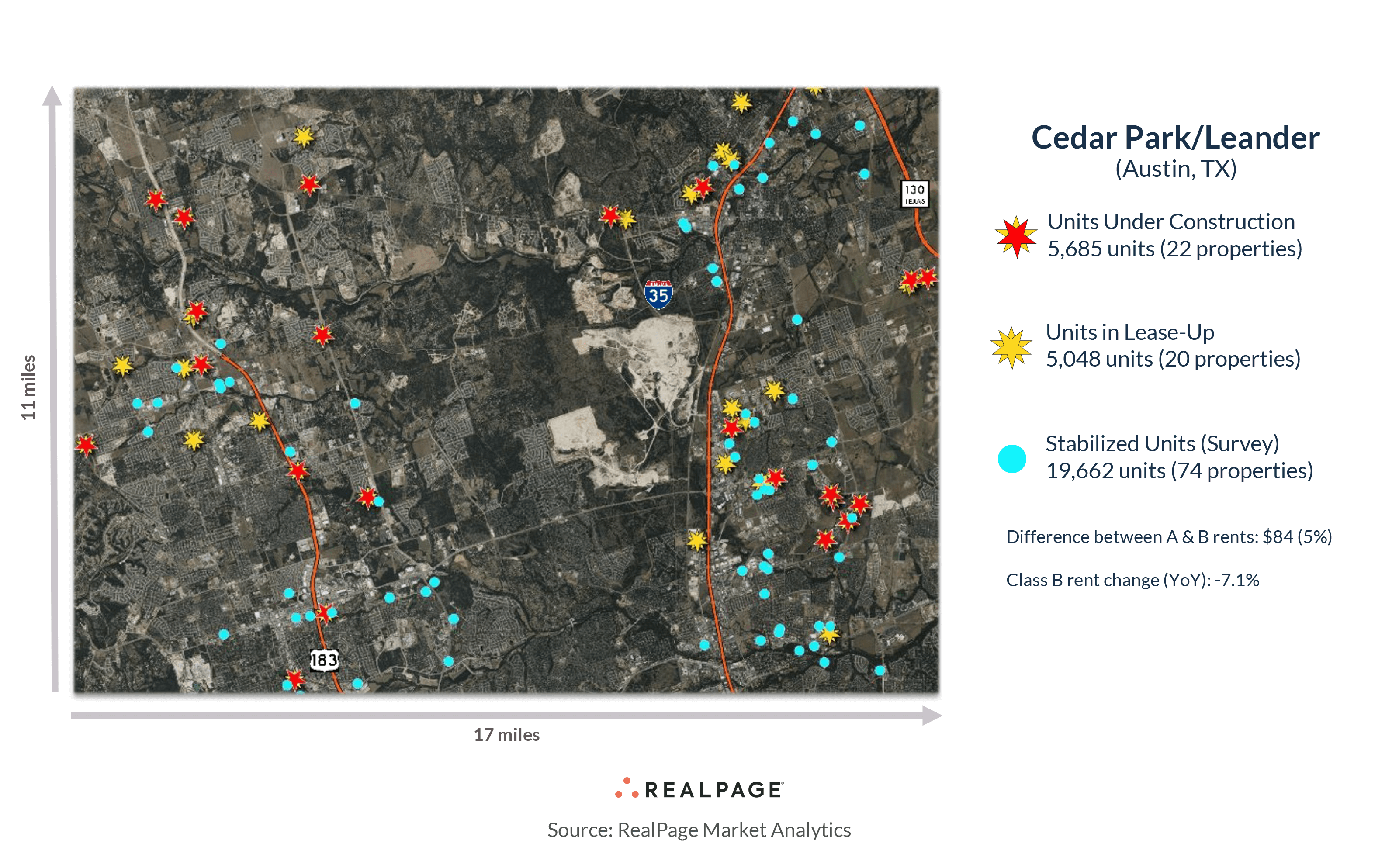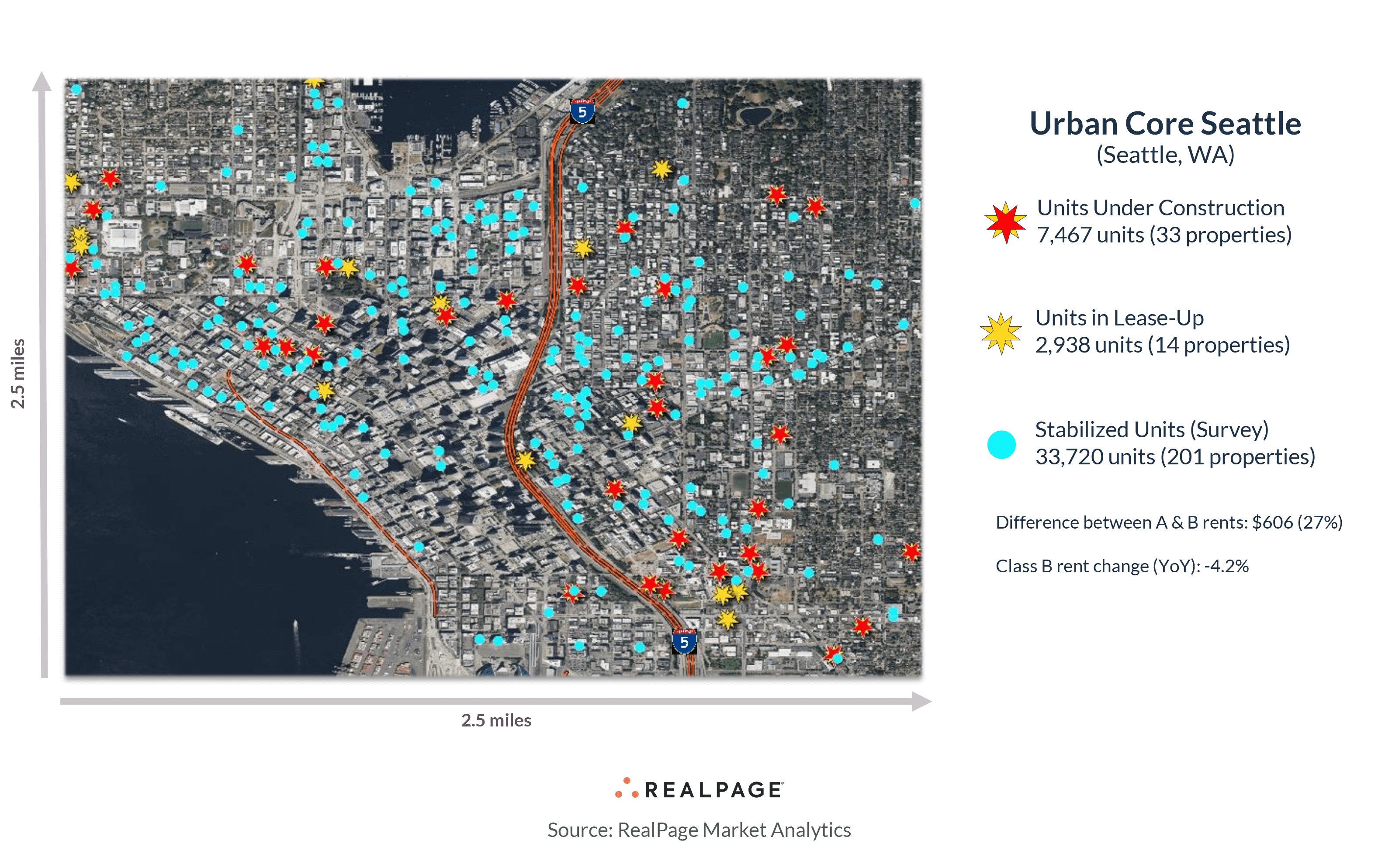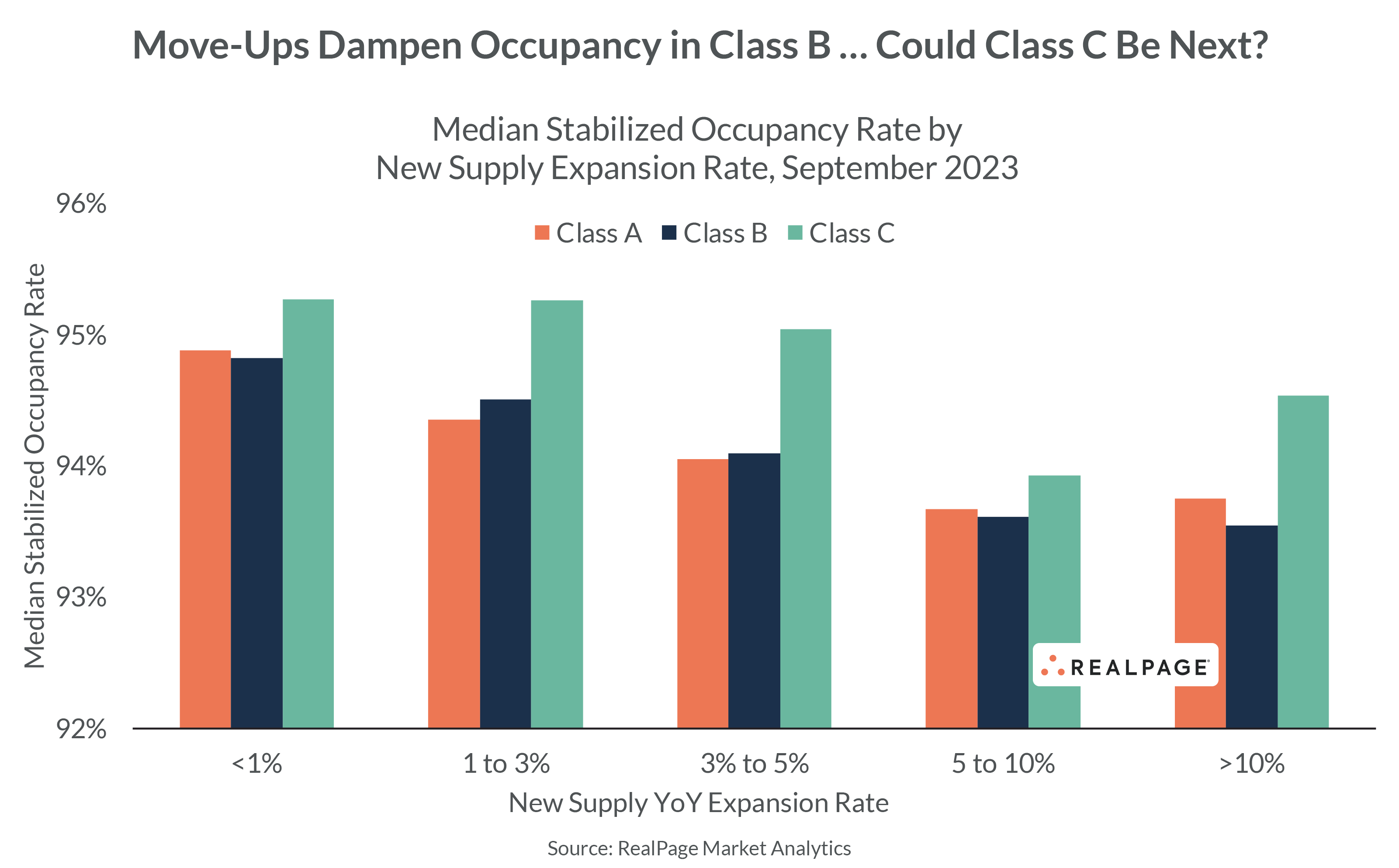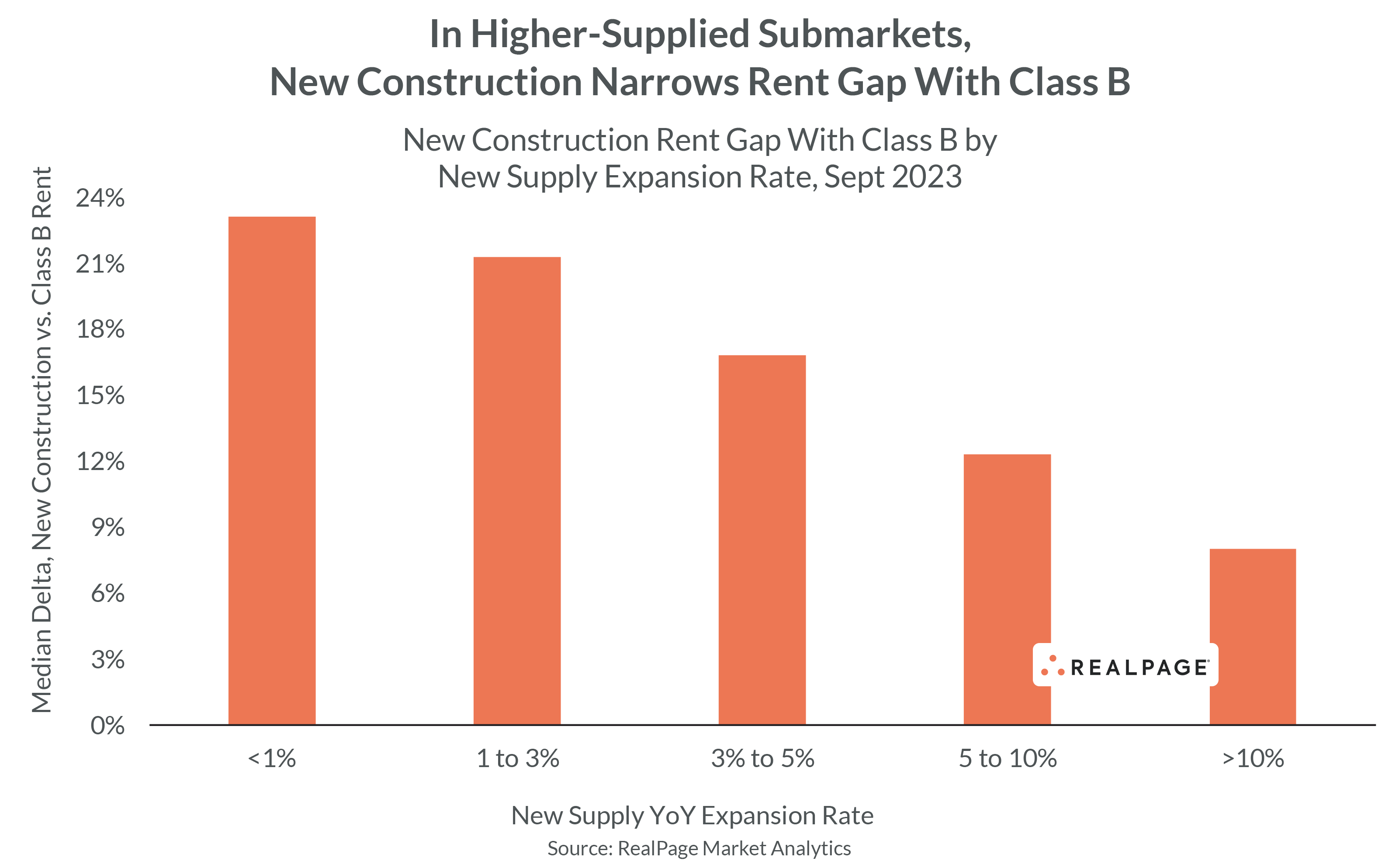Here’s the Most Unexpected Twist of the Apartment Sector in 2023
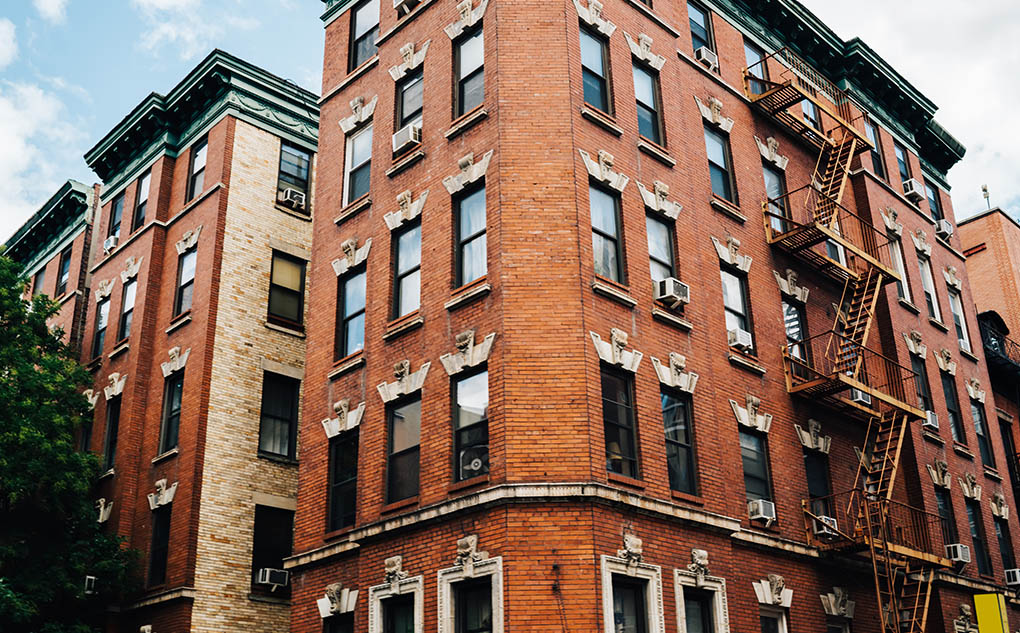
For me, this is the biggest surprise of the U.S. apartment market in 2023: The surge in apartment construction is softening the Class B market more than any other asset class. In high-supply submarkets, Class B rents fell more than twice as much as Class A over the past year. Yet in submarkets with no new supply, Class B performed right in line with Class A.
It’s all about supply. The more supply in a submarket, the more likely rents are falling in ALL asset classes. But surprisingly, the biggest impact is to Class B.
In submarkets expanding their apartment count by more than 10% over the year-ending September 2023, effective rents in Class B fell 3.7%. By comparison, rents in those areas dropped 1.5% in Class A and 0.8% in Class C. And in submarkets expanding their supply by 5-10%, rents fell 2% in Class B compared to 0.6% in Class A and 1.5% in Class C.
As examples: Class B rents fell 7.9% over the last year in Downtown Salt Lake City, 7.1% in Cedar Park (Austin), 6.7% in Avondale/Goodyear (Phoenix) and 4.2% in Downtown Seattle.
Digging into this a lot in recent weeks, here’s what I think is happening:
1. The Narrowing Rent Gap
In these high-supplied submarkets, we’ve seen rapid rent compression between new construction and Class B – in part due to hefty lease-up concessions. That makes it easier for Class B renters to move up into new units.
In the highest-supplied submarkets (defined as those with more than 10% inventory growth), there’s only an 8% gap in average rents between new construction and Class B. In areas with 5-10% expansion, the gap is 12%. Deeper concessions can further narrow the gaps.
By comparison, in areas with little or no new supply, the rent gap is 23% – making move-ups much more expensive and harder to erase with concessions.
And remember: Most of the 2023 lease-up pro formas were written prior to 2022 rent growth, while Class Bs continued to grow rents. That makes the two groups more competitive.
2. Move-Ups from Class B to Class A
Typically, Class B retains a higher occupancy rate than Class A. And that’s still true, on average, nationally.
But it’s a different story in these high-supply submarkets, which further highlights the impact of move-ups and in turn, likely triggers Class B rent cuts. In those high-supplied submarkets with at least 5% inventory expansion, Class B is just 93.6% occupied. Compare that to no-supply submarkets (which we’re defining as less than 1% inventory growth), where Class B occupancy tops the national average at nearly 95%.
Meanwhile, Class C occupancy remains higher than both Class A and Class B regardless of submarket supply levels – showing that it’s not simply a “flight-to-quality” story, although we’d expect more move-ups from C’s to B’s in coming months as a domino effect.
RealPage’s asset classification is an algorithmic model based on normalized rent levels, adjusting for differences in unit sizes and floorplans, relative to each metro area. The distribution between Class A, B and C is roughly 20/40/40 in each market, though it can vary significantly by submarket.
Other asset classification methods may result in different conclusions, but the point here is that regardless of methodology, the top 50-60% of assets based on price are impacted by lease-ups in high-supply areas.
3. Pent-Up Demand for Newer Units
The median rent-to-income ratio in Class B is around 23%. So, for renters below that median, there’s likely some pent-up demand among higher-income households for nicer, newer apartments. They can afford to move up but didn’t due to lack of options or unattractive pricing.
Rent erosion and concessions in new construction now makes that jump much more attractive for those able to afford it.
Usually, renters signing a lease with concessions (i.e. “two months free”) still must have income levels that qualify them for the full rent value. So, this isn’t necessarily about making Class A more affordable, and more about making Class A more enticing to those who could already afford it.
Faster-than-expected filtering
I was wrong about this in our initial outlook for 2023. At the time, our thought process was that Class B was fairly insulated (though not completely insulated) from new supply given (at the time) a 28% average rent discount for Class B versus a new lease-up. That amounts to a concession of more than “three months free.”
Longer term, we did expect “filtering” to play out – which occurs when new supply draws in renters from lower-priced housing and, in turn, opens up availability for middle incomes. I just didn’t think it’d happen this fast.
For Class B operators, this is an unpleasant surprise turn. “Flight to quality” is playing out more than it did in past cycles among mid- and upper-income renters.
For renters, it’s more evidence that the balance of power has shifted back to renters.
And for policymakers, it’s a powerful sign that if you truly care about housing affordability and access, it starts by legalizing and approving A LOT more housing.
Will move-up renters get priced out when concessions burn off?
This question comes up a lot. Are concession hoppers priced out when concessions burn off after the initial lease period? Probably not, BUT it’s also not that simple.
As noted earlier, renters usually must qualify for the non-concessed full rent value before signing a lease. So, in theory, most of these renters can afford to rent even after the concessions burn off. But will they? Many probably won’t. Not because they can’t afford it, but because there’s an even larger wave of new lease-ups hitting the market next year, so there’ll likely be even MORE concessions out there luring “concession hoppers” to move around – especially in dense urban neighborhoods with lots of new apartments within walking distance.
For that reason, many property managers will learn the hard way that concessions rarely just “burn off” in reality as they do in theory. For renters who signed with “two months free,” concession burn off amounts to an effective rent increase of nearly 17%. For “three months free,” that’s 25%. Property managers go to great lengths to ensure renters understand how concessions work; but at the end of the day, concession burn off is still a rent increase.
And for renters now conditioned to chase discounts, how many are going to just willingly accept the full rent value? It’ll be even harder if that property is still offering concessions or if nearby properties are doing the same.
So even for renters renewing their lease, many probably won’t end up paying the full rent value.
What happens to Class B in 2024?
New supply is scheduled to hit the highest levels since the mid-1980s here in 2023, then surge even higher in 2024 – which will be the peak year for completions before the numbers drop off in 2025-26.
That means market conditions won’t meaningfully change next year. It’ll likely just get tougher for property managers, and more favorable for renters.
But there are a few differences. As one executive shared with me recently, 2023 lease-ups were underwritten prior to the 2022 rent hikes, whereas 2024 lease-ups probably came later. So, the next wave of lease-ups will likely have meaningfully higher pro forma rents, which in turn makes it much harder to bring rents closer in line with Class B when they have higher targets to meet. Additionally, there’s a question of how much pent-up demand remains from higher-income Class B renters.
And there’s another key factor for Class B’s outlook: The next step in filtering is to pull up Class C renters into the newly vacated Class B units. We’ll likely see more of that in coming months.